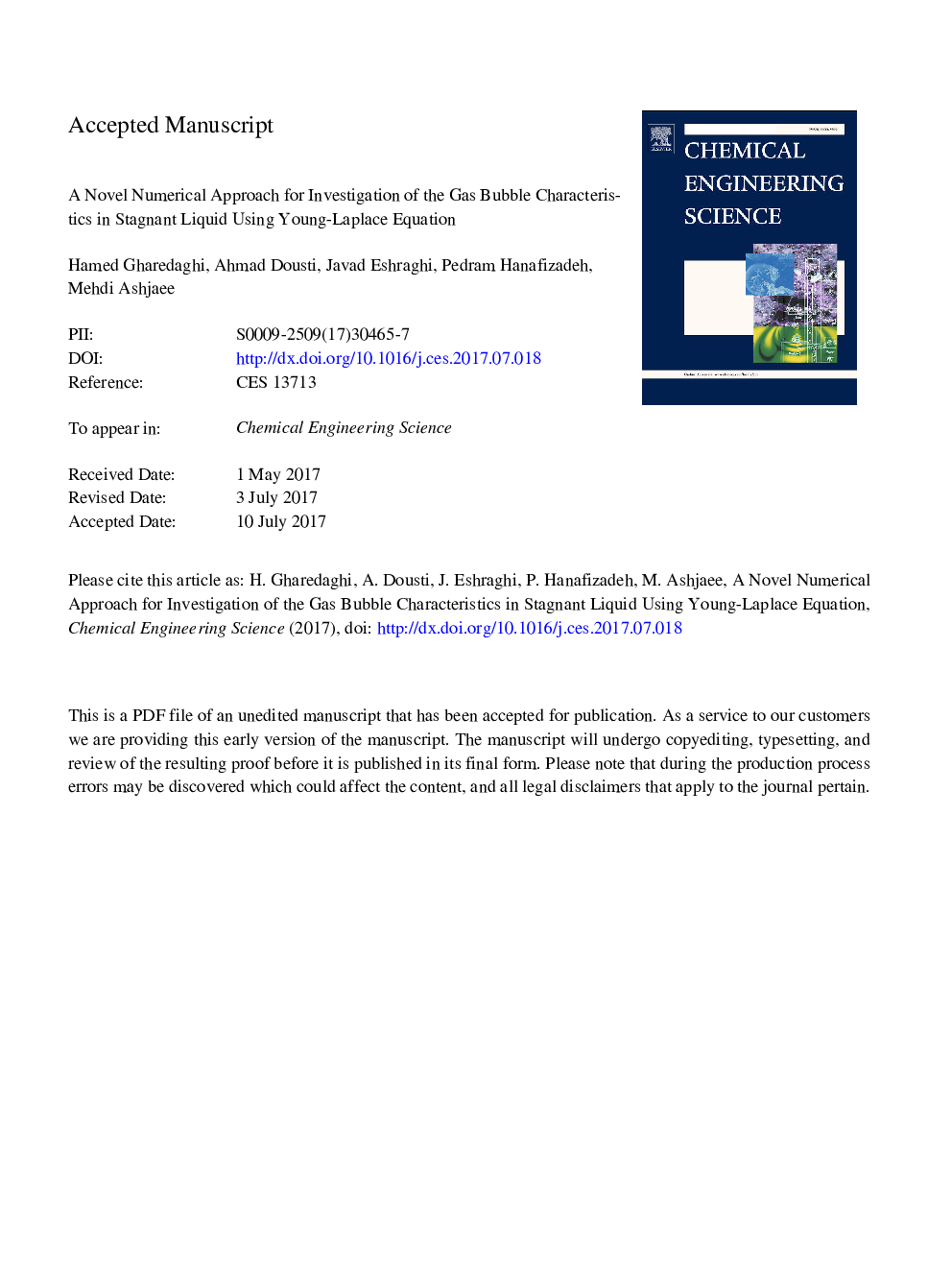| کد مقاله | کد نشریه | سال انتشار | مقاله انگلیسی | نسخه تمام متن |
|---|---|---|---|---|
| 6466842 | 1423246 | 2017 | 29 صفحه PDF | دانلود رایگان |
عنوان انگلیسی مقاله ISI
A novel numerical approach for investigation of the gas bubble characteristics in stagnant liquid using Young-Laplace equation
ترجمه فارسی عنوان
یک رویکرد عددی جدید برای بررسی ویژگی های حباب گاز در مایع روگرفت با استفاده از معادله یانگ-لاپلاس
دانلود مقاله + سفارش ترجمه
دانلود مقاله ISI انگلیسی
رایگان برای ایرانیان
کلمات کلیدی
بررسی عددی، معادله یانگ-لاپلاس، روش حباب چند بخش، پیش بینی مشخصات حباب، نانو سیال، شماره باند،
موضوعات مرتبط
مهندسی و علوم پایه
مهندسی شیمی
مهندسی شیمی (عمومی)
چکیده انگلیسی
In the present study, the Young-Laplace equation was applied to simulate the adiabatic gas bubble growth from a submerged needle in stagnant liquid column. In order to solve the Young-Laplace equation the axisymmetric bubble height was used as input from experimental data. To increase the accuracy of Young-Laplace equations' prediction during the bubble growth, the bubble was divided into four sections with the same height, and Young-Laplace equation was solved for each section individually. By dividing the bubble into four sections, the effects of viscosity and inertia forces within each section were reduced as compared to that of buoyancy and liquid-gas surface tension. Unlike the conventional Young-Laplace approach (one Young-Laplace equation for the entire bubble), the new approach was able to predict bubble characteristics reliably during the growth cycle. The bubble growth was investigated in a column of liquid with a triple contact line that fixed to the needle perimeter. To validate the numerical results, the bubble profiles that predicted by numerical simulation were compared with the experimental results. Experiments were performed by injection of air at constant gas flow rate of 600Â ml/h in the quiescent deionized water and SiO2 nanofluid. The nanoparticle concentrations were 0.05, 0.1 and 0.2Â wt%, and air flow injected from G14 and G17 standard needles. Eventually, evaluation of bubble characteristics, such as the bubble volume, the center of gravity, the instantaneous contact angle, and the bubble aspect ratio were investigated, and the effects of variation of liquid properties on the bubble characteristics were discussed. The results show that the present method can predict the bubble shape during 97.5% of growth time with mean absolute error of 6%. Furthermore, the results revealed that the bubble size decreased with increment of Bond number. Also, bubble instantaneous contact angle and bubble aspect ratio were almost irrelative to Bond number during the growth cycle.
ناشر
Database: Elsevier - ScienceDirect (ساینس دایرکت)
Journal: Chemical Engineering Science - Volume 173, 14 December 2017, Pages 37-48
Journal: Chemical Engineering Science - Volume 173, 14 December 2017, Pages 37-48
نویسندگان
Hamed Gharedaghi, Ahmad Dousti, Javad Eshraghi, Pedram Hanafizadeh, Mehdi Ashjaee,
